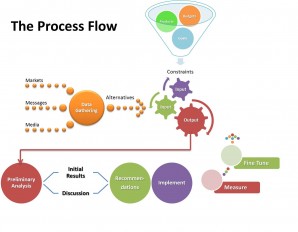 Those of you who have read my many blog posts know that “once upon a time” I traveled the world teaching — and preaching — topics that I was passionate about. I did it because I believed in my causes. And because I made a pretty good living at it. And because I loved visiting new places.
Those of you who have read my many blog posts know that “once upon a time” I traveled the world teaching — and preaching — topics that I was passionate about. I did it because I believed in my causes. And because I made a pretty good living at it. And because I loved visiting new places.
Each one was a new learning experience about people and cultures even as I taught technical, management and marketing subjects. I still do that today, thankfully without nearly as much of the travel, and I still love to see companies grow as a result, at least in part, because of my work with them.
I remember by first trip to Taiwan. The Chung Shan Institute of Science and Technology had sent five people to Chicago, where I was doing a public seminar, to see whether or not I could do it for their people in Taipei. These people had traveled half way around the world, with multiple delays, to participate in the day’s events. It was a challenge to keep them awake with their jet lag during the seminar, which was technical in nature, but the after-hours meeting went well and they decided to spend the $10,000 it would take to bring me to their organization. So off to Taiwan I went.
I was met by a driver and an assistant upon arrival after passing through customers with seven carousels of 35mm slides and five boxes containing 50 binders containing 300+ page each. Thankfully I had created paperwork saying that it was all for demonstration purposes and not for import and had affixed my company’s corporate seal over my signature. Very official looking and quite acceptable to the customs people. Phew! Hurdle number one navigated after my travel half way around the world.
I was given a day to recover from jet lag and then joined the top managers of the Institute for a formal dinner in a top restaurant. And I waited a long time to see what the other people would eat before selecting my meal from the large spinning circular central table upon which the food was arrayed. And finally my host told me to please take some food so that everyone could begin to eat. No one, it turns out, would begin until I, the honored guest, approved each dish.
The food was exquisite. I have no idea what was in most of the dishes, but when in Taiwan, go with the flow! And speaking of flow, there was a lot of rice wine flowing, but it was not to be imbibed without a toast to the person on the left prior to raising a glass. To drink without the toast was clearly an insult. Something that was also explained to me after my first two sips.
OK, this is getting long. The point I was going to make when I started this post was that my hosts, who had paid me a lot of money, were treating me like royalty. During the two days of seminar presentation, they took me to a separate private room during breaks for coffee so that I could have a slight break. And they took me outside for lunch so that I was not required to answer questions during a meal break. In short, I truly felt more respected than I had every previously felt.
I asked my hosts about my treatment as they took me back to the airport after the seminar. Why, I asked, had they treated me so well? And they were surprised at the question. They explained to me that educators, paid or not, were held in the highest esteem and should only be treated as such. And that they were honored that I would come to speak to their staff.
I think about this experience now and then as I teach people about marketing. I know that I gave 110% during my days in Taiwan because to do less would have been to dishonor my hosts. And that I will not do.
As you provide your product or service, I hope you will think of both your customers and your suppliers as honored partners. For they deserve no less than that.
Comments, pro and con, are welcome as always. Thanks for reading.




